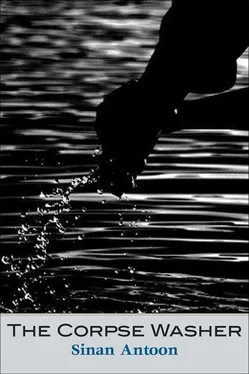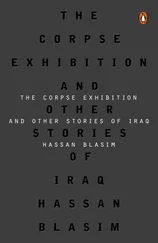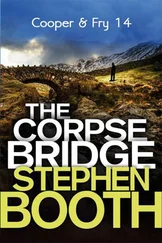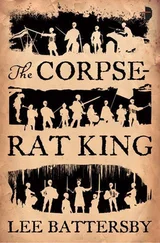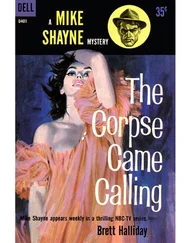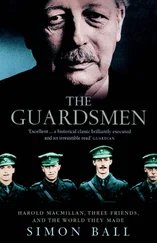I stopped by his office to take the chair home, intending to clean it up a bit and add some red dye to resemble drops of blood. The professor seemed anxious. He said that there were rumors about revenge against anyone who had been a member of the Ba’th Party. I laughed, saying that it was obvious he wasn’t a real Ba’thist, that, like so many, he had been forced to join, in his case to gain approval for his scholarship to Italy. He said people were trying to settle scores. “Let’s hope for the best.”
We were told to bring our works two days before the opening. I took a taxi to the French Cultural Center at Abu Nuwas Street. The streets were crowded and chaotic, full of bumps and craters because of the bombing. I was afraid at first that the chair, which I had put in the trunk, would be damaged, but then I remembered that it was made of iron.
Only one of the two lanes was open to traffic. Cars were driving in both directions in the same lane. The eastern side of the street had huge American tanks parked on it. When we approached al-Firdaws Square, where the big hotels are, American soldiers had blocked the streets and were motioning to everyone to turn around and go back. The driver sighed and made a U-turn. We took al-Sadoun Street to al-Karrada and arrived at the building. I had passed by it many times years before when Reem was taking French classes there. It had a nice café in the back garden where we would sometimes sit. The last time I was here was the day she finished her French course. Her classmates had gathered in the courtyard to take pictures. Fifteen minutes later a GMC truck with tinted windows parked on the sidewalk right under the “No Parking” sign. The driver turned the flasher on and a man wearing khaki came out of the passenger side. He approached the group which had been exchanging good wishes and congratulations and asked who had used the camera—“Photography is not allowed here.” He snatched the camera from one of the female students, took the film out and warned everyone not to do it again. He went outside, got into the car and took off. Most of us were surprised, but we later realized that the presidential palace was just across the river. Now the Americans have occupied it and surrounded it with walls and checkpoints; our new rulers can live far away from us.
Finally arriving at the center, I asked the organizers to put my piece in a dark corner away from windows, but close to where I could still plug in the projector light I had added to it to make it look like an interrogation or torture chair. The opening ceremony was held in the afternoon, because having it at night would be too dangerous and would violate the curfew. Nevertheless, the ceremony was uplifting. It included a short speech by the French cultural attaché, then another by one of the academy’s professors, full of hope for a future filled with freedom. Many of us were hopeful in those days that there would at least be some sort of new beginning for people to start a better life despite all the destruction. The occupation would come to an end sooner or later. I was surprised that some of the participating artists went overboard in praising the Americans, as if they’d actually come here for our sake. I was happy to see Sergio de Mello, the United Nations representative in Iraq, at the exhibition. He and the three men accompanying him paused before each work. He paused much longer before mine, saying through his interpreter: “Very powerful.” Then he shook my hand and covered it with his left and thanked me twice.
The participants in the exhibition included those who had graduated a few years earlier, but who refused, for political and ethical reasons, to have their work co-opted by the politics of the time. The exhibition went on for a week, and the responses were positive. A film crew that was working on a documentary about dictatorship and occupation conducted interviews with many of us. One of them was an Iraqi based in New York who spoke with me about my piece. I asked him to send me the interview on a tape or CD and he promised to do so, but I never received anything. I never knew whether he just forgot, or whether the package had been stolen. Their film was shown a year later on the al-Arabiyya channel. I waited for even a few seconds of the interview or a glimpse of the exhibition, but there was nothing. What they did show were images of the destruction at the academy and of all the bombing and looting. There were also interviews with some poets at al-Mutanabbi Street. I was suspicious of all the Iraqis who had come back after many years abroad. Many of them either came with the tanks and the militias or returned to make money or get a hot story and then forget all about us.
A month after the exhibition, I saw men on TV looking for de Mello’s corpse in the rubble of the Qanat Hotel. I was heartbroken. A huge truck full of explosives had blown up the hotel which served as the UN’s headquarters in Baghdad. De Mello and many others were killed. A few days later, Muhammad Baqir al-Hakim was assassinated in Najaf. Explosions multiplied. They went after important personalities at first, then targeted average folk who had nothing to do with what was taking place but whose lives became a currency that was easy to circulate and liquidate. We’d thought the value of human life had reached rock-bottom under the dictatorship and that it would now rebound, but the opposite happened. Corpses piled up like goals scored by death on behalf of rabid teams in a never-ending game. That is the thought that came to mind when I heard “Another car bomb targeted … ”
Following each round, human remains were plucked from a mixture of blood and dirt. The ones who remained in one piece without losing an eye or their entire head were fortunate. The American referee had killed enough already and now was killing only sporadically, allowing the local players, who were even more ferocious, to carry on. But even those who picked up the pieces and cleaned up what death left on the city’s face were not safe from death.
Hammoudy went to the Shorja market one Thursday at the end of August. He was rapidly running out of camphor and ground lotus leaves for the mghaysil . He had told me that he now needed to restock once a month instead of every six months as he used to do before the war.
Hammoudy did not come back home that day, nor the following day. His cell phone was turned off and he didn’t respond to the text messages that his wife and his brother, who worked at an electronics store, had sent him. There had not been any bombs or explosions at the Shorja market that day — or even that month. For two days they looked for him in the hospitals nearby and went to police stations without coming up with anything. People told them to go to the morgue. His brother looked at all the photos they had of all the bodies piled up everywhere in that place, which couldn’t cope with the numbers, but found nothing. He looked in the mounds of corpses for the green ring Hammoudy used to wear on his left hand. He still goes there from time to time, asking, just in case something turns up. Hammoudy’s mother doubled her visits to al-Kazim’s shrine nearby. Al-Kazim was known for fulfilling wishes and never letting down those who sought his intercession. She even pledged to walk all the way to Najaf if Hammoudy came back safe, but he has yet to return.
Did someone kidnap him thinking that he was a wealthy merchant? Neither his appearance nor his age would lead anyone to think that. Kidnappers usually call the family to demand a ransom and never deliver the body until they get their money, or some of it. No one ever called. Hammoudy never came back, even though his mother walked to Najaf three times.
Читать дальше
